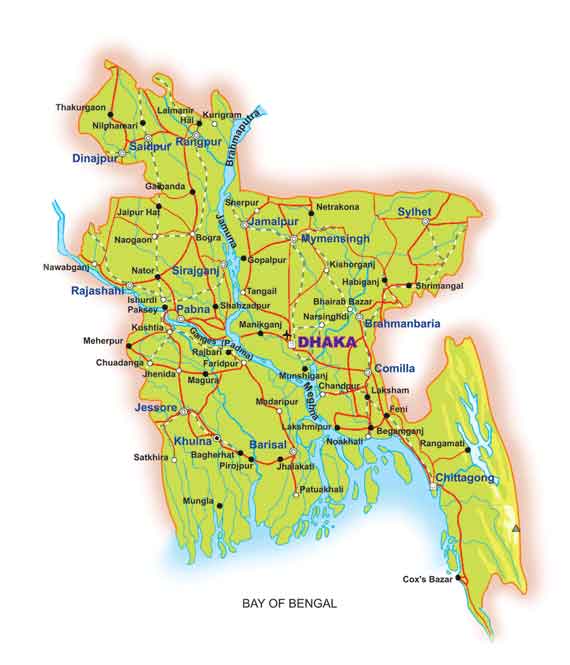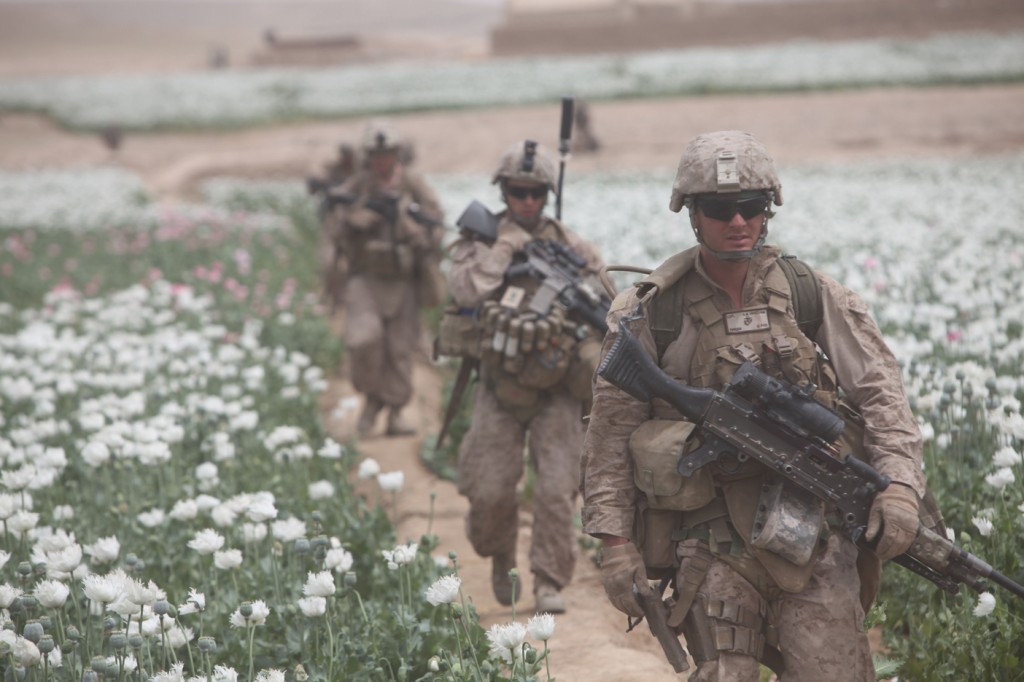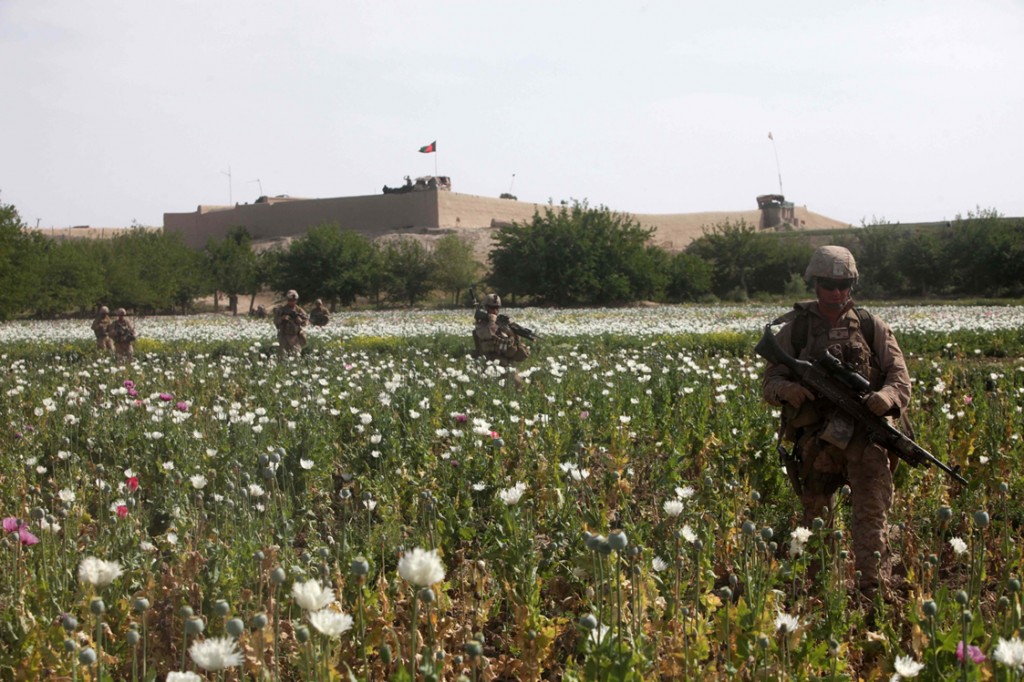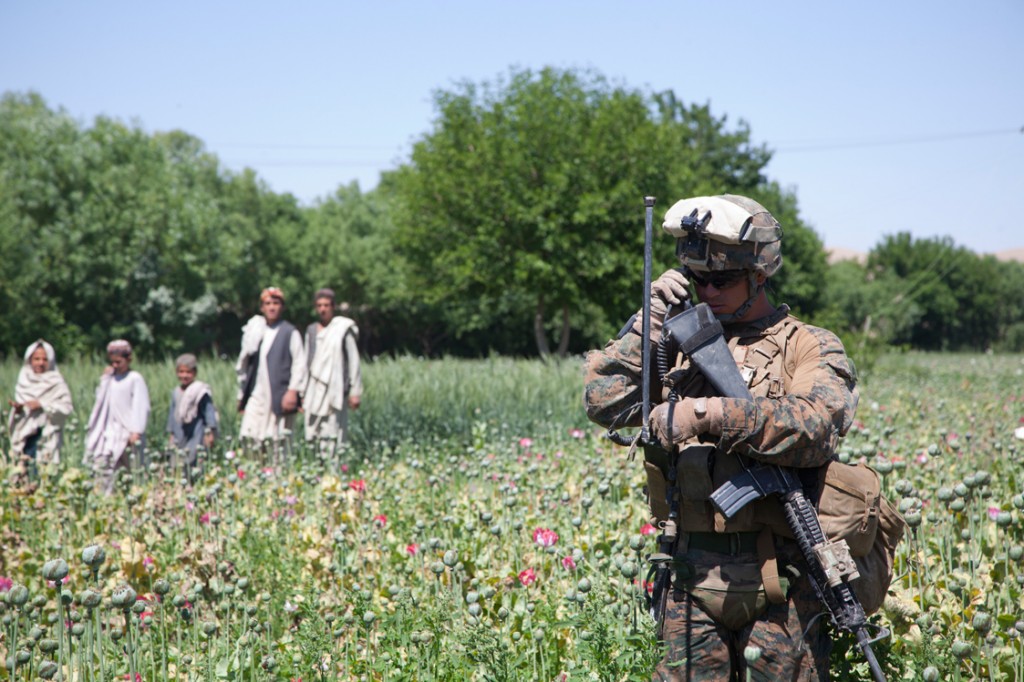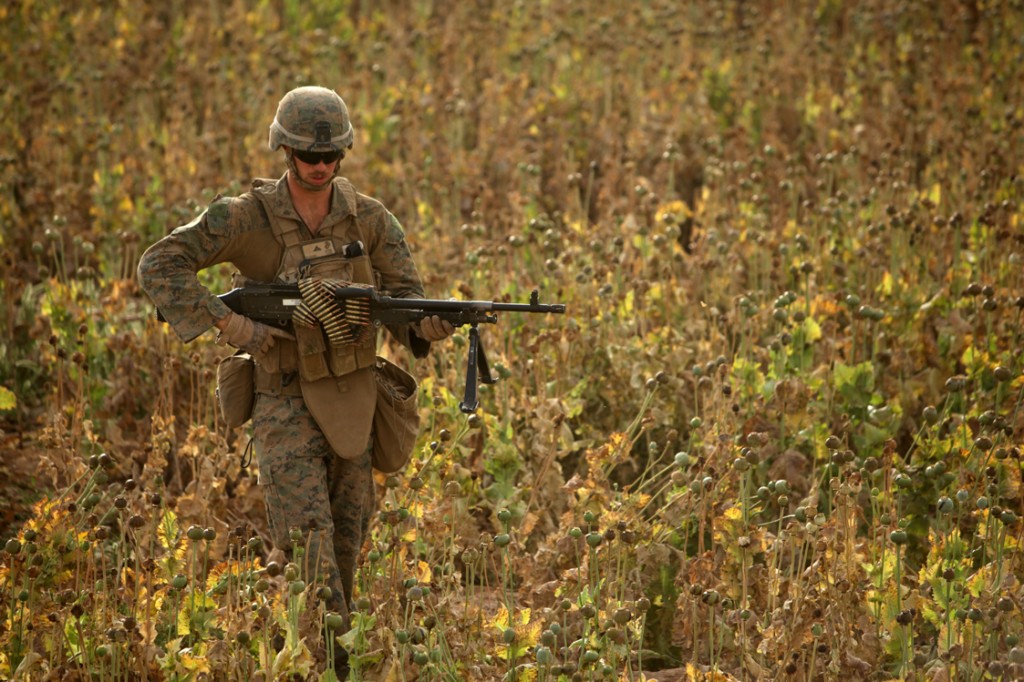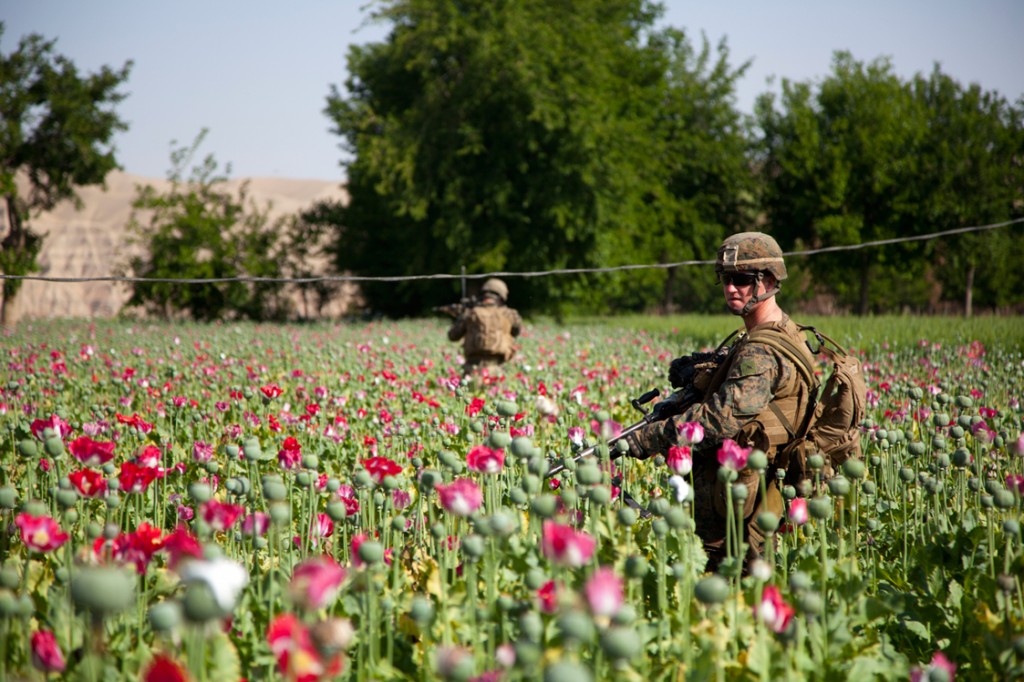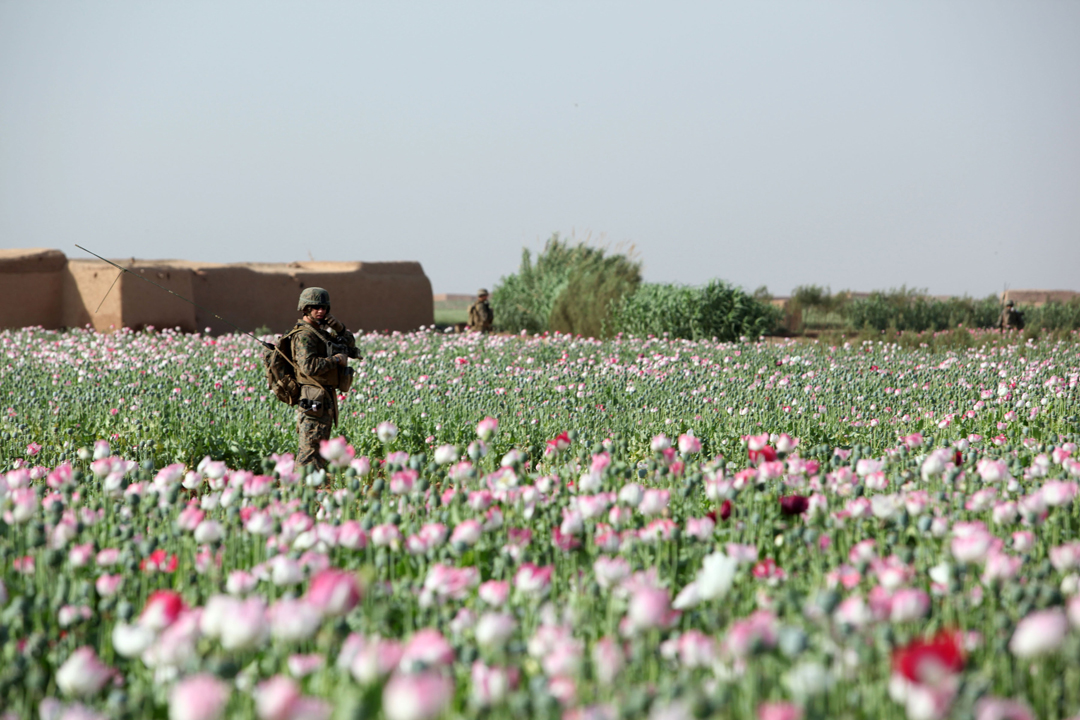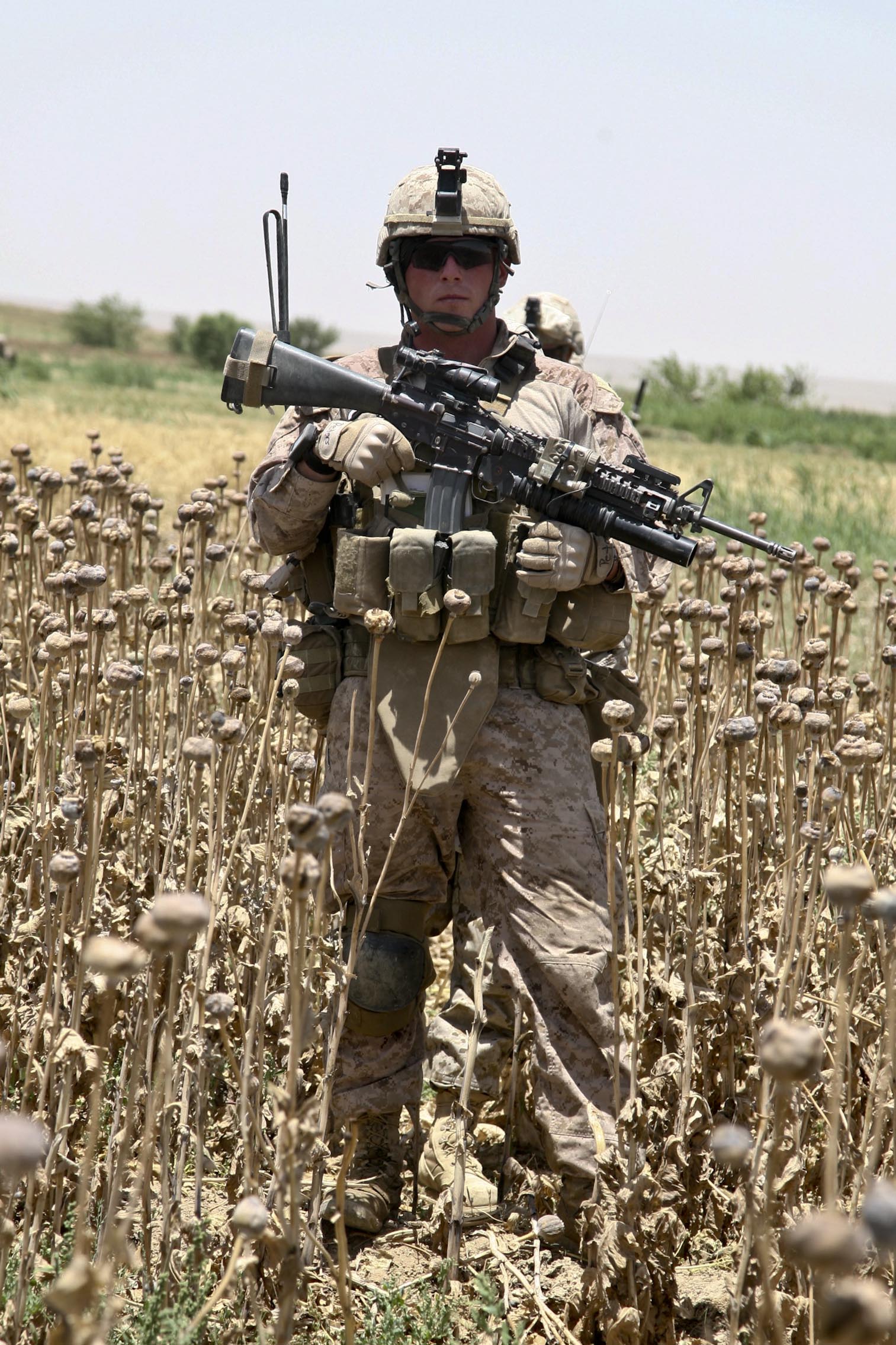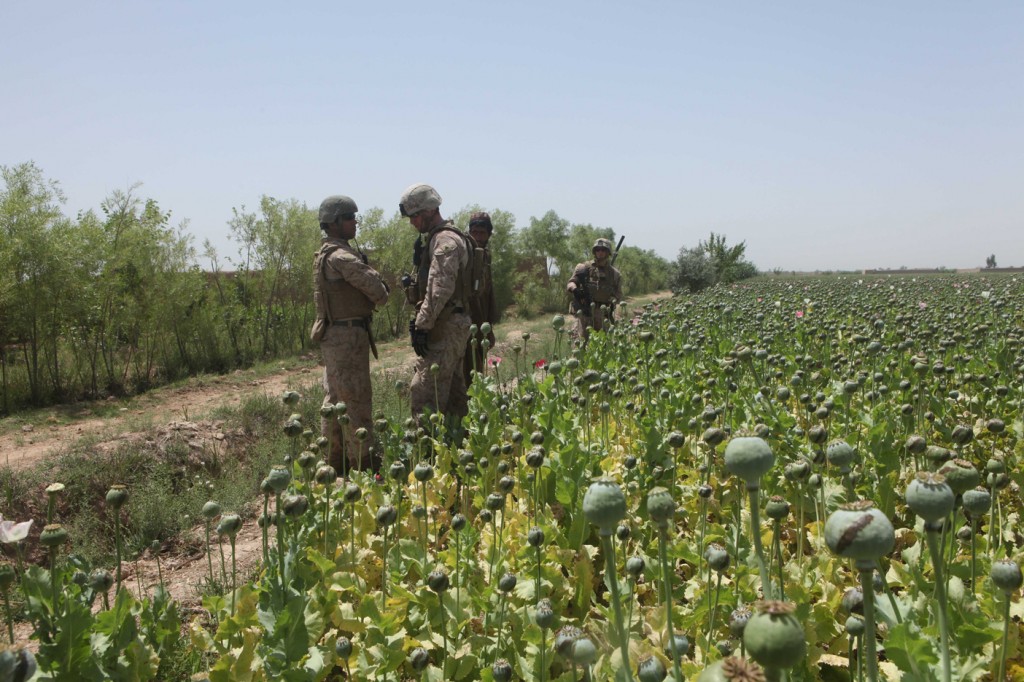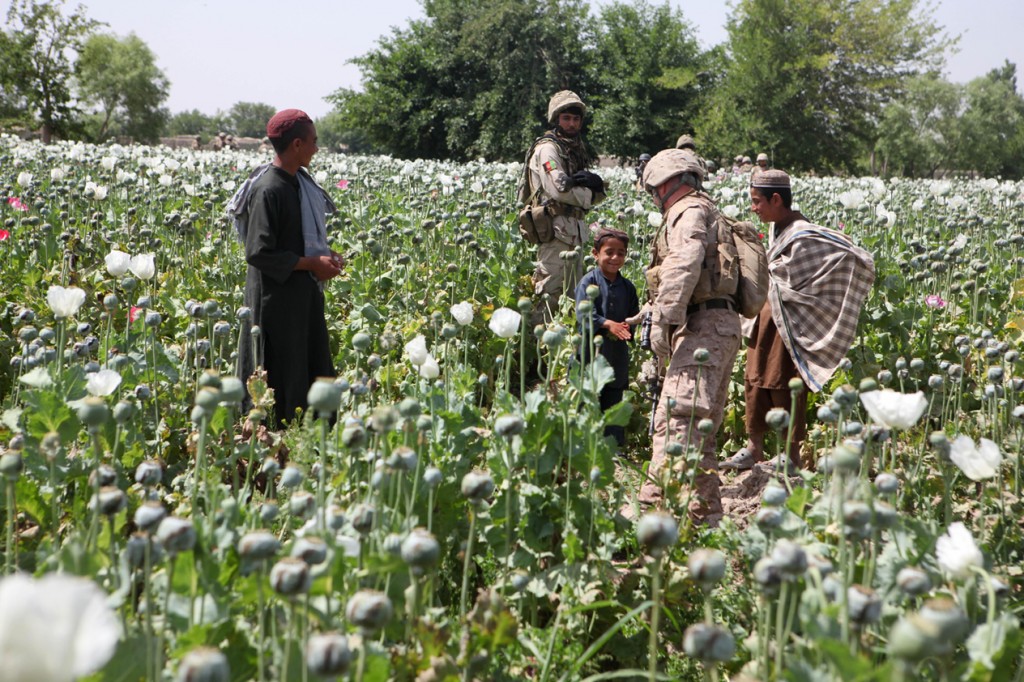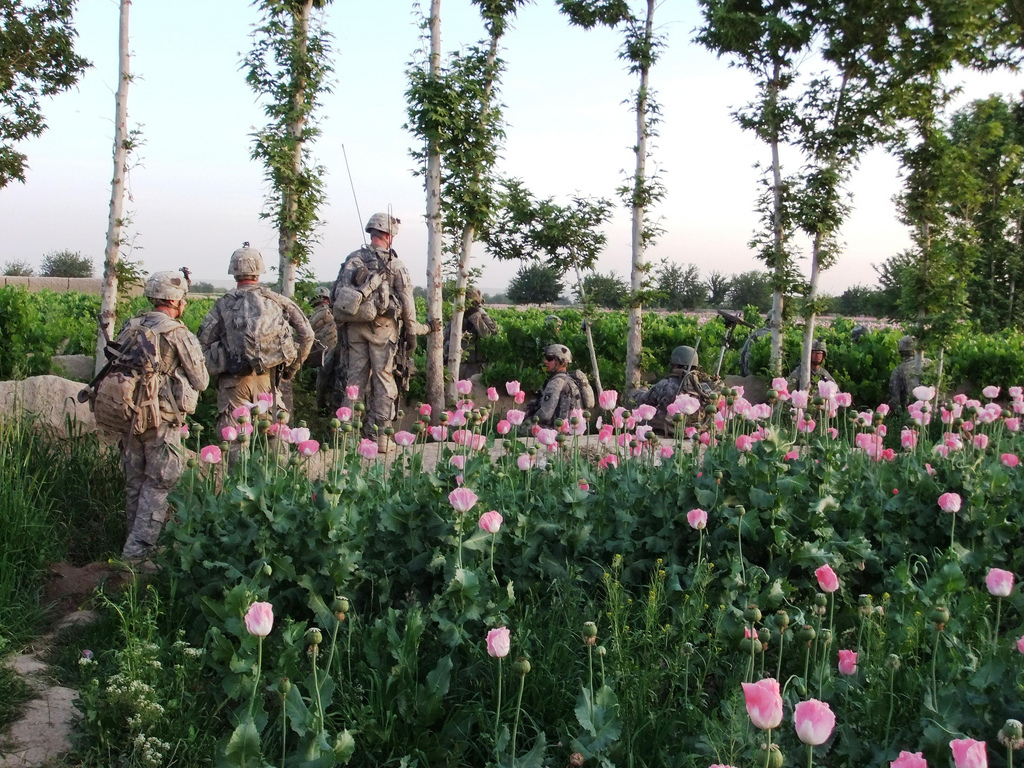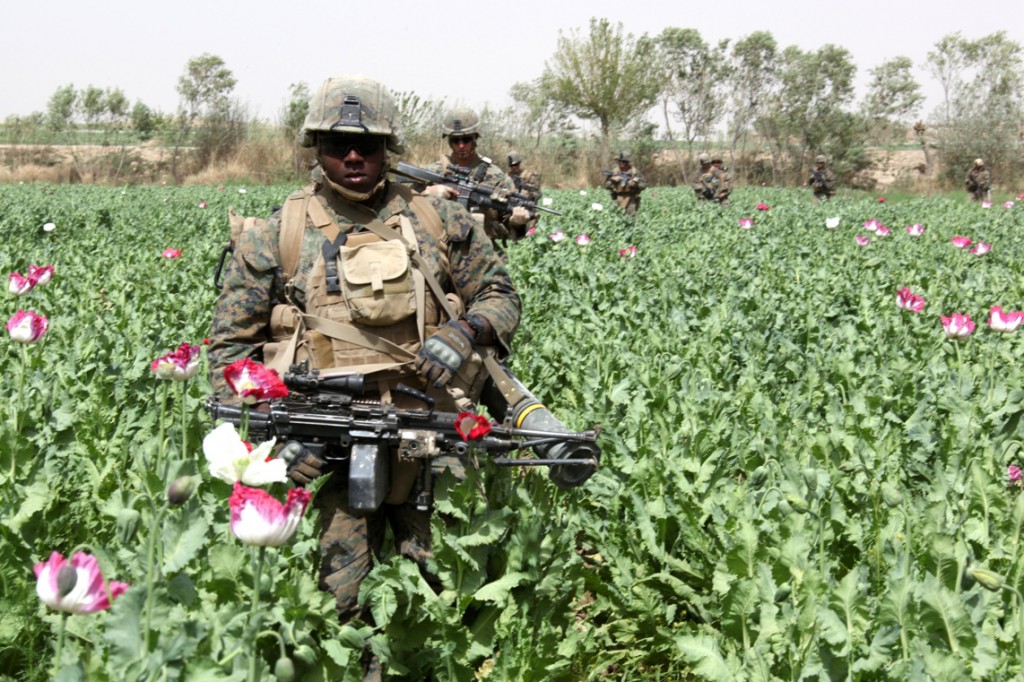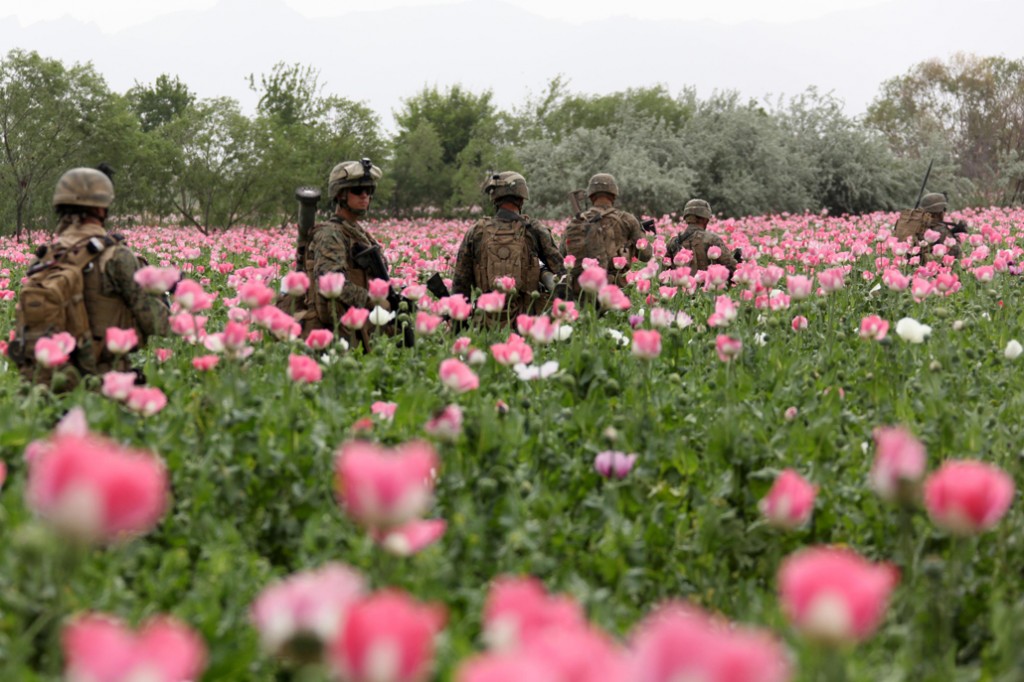1971: The blitzkrieg in East Pakistan
When Tikka Khan landed in the political turmoil of East Pakistan on 7 March 1971 as governor-designate of the province, he combined in himself the office of Martial Law Administrator (MLA) and General Officer Commanding in Chief Pakistan Eastern Command. The quantum of troops on the command Orbat was one infantry division, a training establishment at Chittagong, and attendant supporting arms and services. The Pakistani Air Force had only one Sabre F-86E squadron operating from Dacca airfield. There was a navy establishment at Chittagong, but the naval presence in East Pakistan waters was negligible.
14 Infantry Division, comprising four brigades, was the traditional formation located in the east wing from the inception of Pakistan to meet external and internal contingencies. At the time Tikka Khan took over, Maj Gen Khadim Hussain Raza was its commander. To cope with the Awami League-inspired insurgency, he deployed his troops in far-flung areas to show a presence and, should the situation demand, take firm action. 53 Infantry Brigade was located at Comilla and was operationally responsible for the entire area east of the Meghna river.
The armoured and artillery units had mixed rank and file, the ratio being 30 per cent of Bengalis to 70 per cent of West Pakistanis.
31 Punjab was stationed at Sylhet in the north, 2 East Bengal Regiment (EBR) at Brahmanbaria opposite Ashuganj, brigade headquarters, along with 4 EBR and 24 FFR Battalions, in the Comilla-Maynamati complex, and 20 Baluch with 8 and 9 EBR Battalions in the Chittagong area. In addition, there was the EBR Training Centre at Chittagong with about 2,500 instructors and recruits under training. This included the rank and file of 9 EBR, which was under raising at the time. 23 Infantry Brigade was operationally responsible for the northwestern sector, north and west of the Padma and Jamuna, with 25 Punjab at Rajshahi, 26 FFR at Dinajpur and EBR at Saidpur. 107 Infantry Brigade controlled the southwestern sector, south of the Padma and west of the Jamuna, with 25 Baluch and 1 EBR, later reinforced by 12 Punjab, at Jessore. 57 Infantry Brigade was concentrated in the general area of Dacca, with 2 EBR located in Joydebpur, north of Dacca.
There were some supporting arms units, namely one armoured regiment, five field artillery regiments, one anti-aircraft regiment, and two mortar batteries. It may be presumed that they were also distributed along with their respective affiliated brigades. In addition, there were 16 wings of East Pakistan Rifles of a total strength of about 13,000, mostly manning outposts along the border with neighbouring countries.
The airlift was however halted on the threat of mutiny by the Bengali personnel of the Pakistani Air Force, constituting about half the strength of the force in East Pakistan.
Thus it may be seen that out of a total strength of 18 infantry battalions six were completely composed of Bengalis. Of the remaining 12 battalions, Bengalis formed about 30 per cent of the officer cadre in each unit. The armoured and artillery units had mixed rank and file, the ratio being 30 per cent of Bengalis to 70 per cent of West Pakistanis. Fazal Muqeem explains in his book that of the 12 West Pakistani battalions two were to return to the western wing on relief. As such, their strength was as low as 400 all told because large advance parties had been sent westward earlier.
The shortage of troops to implement the planned crackdown on the Bengali nationalists was realised by Gen Yaqub Khan, Tikka Khan's predecessor, and he had asked for an additional division as early as the beginning of February. By the end of the month an infantry brigade from 16 Infantry Division at Quetta was earmarked for induction in East Pakistan. About two battalions were airlifted to Dacca without heavy weapons and baggage in reduced strength in the first week of March 1971. The airlift was however halted on the threat of mutiny by the Bengali personnel of the Pakistani Air Force, constituting about half the strength of the force in East Pakistan.
After the severe counter insurgency operations described earlier, whatever remained of the Pakistani Army and a few loyal elements of Bihari troops were committed to border defence.
Tikka Khan had a threefold problem. Firstly, there was the ever-present possibility of mutiny in the services in his command. This required firm surprise measures to disarm the disaffected Bengali elements, without at the same time alienating loyalists. Secondly, there was the threat of a province-wide armed revolt against established authority, and for this the army had to be widely dispersed. Because the paucity of unmixed West Pakistani units and the operational necessity of dispersal had reduced the strength of isolated pockets, they became vulnerable to rebel groups.
Tikka Khan contrived to bolster the strength of such isolated garrisons by reinforcing them with artillery in an infantry role. Thirdly, the civil administration had completely collapsed and the day-to-day routine of this administration was falling upon the Pakistani Army. On the day of launching the crackdown, code-named Operation Blitz, the army strength went down from 18 to 12 infantry battalions and the supporting elements by about three artillery units. Worst hit were the paramilitary forces. Disaffection in EPR, whose strength was about 13,000 rank and file, left the border outposts unmanned. After the severe counter insurgency operations described earlier, whatever remained of the Pakistani Army and a few loyal elements of Bihari troops were committed to border defence.
Till the outbreak of full-scale war on 3 December, reinforcements continued to arrive in East Pakistan.
At this stage, in the first week of March, Pakistan 9 Infantry Division was airlifted eastward at the cost of denuding the strike force in the western wing. The formation was inducted without heavy weapons and baggage and was deployed against the insurgents immediately on arrival. Maj Gen Shaukat Riza, General Officer Commanding 9 Infantry Division, was made responsible for the whole area east of the Meghna, where he took over 53 Infantry Brigade from 14 Infantry Division, already operating there.
His broad deployment was 313 Infantry Brigade in the Sylhet and Maulvi Bazaar area, 117 Infantry Brigade in the general area of the Comilla-Maynamati complex, and 53 Infantry Brigade from Comilla was pushed to the Feni-Chittagong area. 27 Infantry Brigade, belonging to 9 Infantry Division, was sent to the Mymensingh area and placed under the command of 14 Infantry Division. The induction of Pakistan 16 Infantry Division under Maj Gen Nazar Hussain Shah soon followed. This division came with only two brigades and was made responsible for the area west and north of the Jamuna and Padma. 23 Infantry Brigade from 14 Infantry Division, already operating in the area, was placed under the command of this formation.
Niazi tried to put up a false front of armed strength by assigning the names and numbers of battalions in West Pakistan to the "Azad Kashmir" and Mujahid battalions. This confused Indian intelligence, which accordingly estimated the Pakistani strength at about 35 regular battalions.Eventually, this division was so deployed that 23 Infantry Brigade was operating in the north of the Dinajpur-Saidpur complex, 205 Infantry Brigade in the general Hilli-Gaibanda area, and 16 Infantry Brigade in the south in the Rajshahi-Nator-Ishurdi area. As a result of the induction of these two divisions from West Pakistan, and the resultant bifurcation of operational responsibility, 14 Infantry Division was left with the northern sector covering Mymensingh and Dacca and the southwestern sector covering Jessore and Khulna. Efforts continued thereafter to induct more manpower to meet the ever-growing needs of counterinsurgency operations.
A new paramilitary force called the East Pakistan Civil Armed Forces (EPCAF) with about 6,000 rank and file enlisted from loyal elements, mostly Biharis, was raised in April. Maj Gen M. Jamshed, an ex-Director General of the erstwhile EPR, was appointed to raise and command the force. Hurriedly collected and committed to border duties, this force suffered from chronic shortages of equipment and manpower and lack of training. About five Mujahid battalions were also raised, but their war potential remained doubtful. In addition, some Razakar units were brought into being to protect vulnerable points in the rear, but since their members were mostly Bengalis their loyalty was uncertain and as a result their contribution was rather marginal.
Till the outbreak of full-scale war on 3 December, reinforcements continued to arrive in East Pakistan. The Frontier Scouts, a paramilitary organisation employed on the northwestern frontier, contributed substantial strength, while one field regiment and two "Azad Kashmir" battalions arrived in November. It is estimated that the total strength of the Pakistani Army in the east wing was never more than about 30-odd infantry battalions, one armoured regiment, six artillery regiments and three to four mortar batteries. Niazi tried to put up a false front of armed strength by assigning the names and numbers of battalions in West Pakistan to the "Azad Kashmir" and Mujahid battalions. This confused Indian intelligence, which accordingly estimated the Pakistani strength at about 35 regular battalions.
Niazi's decision to hold the border in strength put further pressure on the existing resources of regular troops and caused their wider dispersal. As the struggle for the border posts increased in magnitude and intensity, Niazi discovered the paramilitary forces and newly mustered Mujahids and Razakars were not able to hold out on their own against the Mukti Bahini attacks, especially when backed by Indian support. He thought it expedient to strengthen these posts with a hard core of regular army element. The process was carried so far that by the time war came all the fighting formations and units, from brigade downwards, were mixed. Even in a company it was common to find a platoon of regulars, a platoon of EPCAF and another of Mujahids.
This expedient grouping no doubt increased the number of fighting subunits, units and formations, but it reduced their military potentital greatly. The accompanying dispersal in deployment also diluted the supporting arms units. It was not uncommon to find single tank-and-gun supporting detachments well away from their parent units. This affected the command and control aspects, and in his effort to rationalise the situation Niazi organised two ad hoc divisional headquarters and three or four brigade headquarters. But these hurriedly organised headquarters suffered the attendant shortcomings of ad-hocism, lacking adequate communications, trained staff and other ancillary units, and were therefore not fully effective.
Niazi had obviously not learnt from Lt Gen B.M. Kauls mistakes in the Indian debacle against the Chinese in 1962, when stray formations were hurled into battle under 4 Infantry Division to face inevitable disaster.
Ad hoc 36 Infantry Division, under Gen Jamshed, was allotted operational responsibility for the northern sector, including the defence of Dacca. The troops employed in the general area of Mymensingh and Kamalpur were grouped into ad hoc 93 Infantry Brigade. The eastern sector was divided in two, the northern half, from Sylhet to Akhaura and Brahmanbaria, going to Maj Gen Qazi Abdul Majid, General Officer Commanding 14 Infantry Division. To make up his third brigade, the troops deployed in the general Sylhet area were grouped into ad hoc 202 Infantry Brigade. The southern half of the eastern sector from Comilla to Cox's Bazaar was placed under the command of Maj Gen M. Rahim Khan by grouping it into ad hoc 39 Infantry Division. The troops deployed in Chittagong complex were grouped into ad hoc 97 Infantry Brigade.
For some inexplicable reason Headquarters 9 Infantry Division, under Maj Gen Ansari, were moved to the southwestern sector to take over two brigades originally belonging to 14 Infantry Division, while Headquarters 14 Infantry Division were commanding two brigades of 9 Infantry Division in the eastern sector. 16 Infantry Division under Gen Shah, who was responsible for the north-western sector, was perhaps the least disturbed. Otherwise, from 25 March the command of all divisions, and perhaps of some brigades, changed hands, and about one-sixth of the brigades were commanded by alien divisional headquarters and lacked mutual understanding, so very essential in battle. These hotchpotch arrangements of Niazi did not help matters but compounded his difficulties. Niazi had obviously not learnt from Lt Gen B.M. Kaul's mistakes in the Indian debacle against the Chinese in 1962, when stray formations were hurled into battle under 4 Infantry Division to face inevitable disaster.
Niazi finally had about 30 regular infantry battalions which bad been grouped into infantry brigades. Four of these brigades belonged to 14 Infantry Division, three each of 9 and 16 Infantry Divisions were inducted in 1971, and the remaining two brigades were raised by grouping some loose battalions, augmented by about a battalion strength of paramilitary forces. To rationalise command and control, Niazi raised two additional divisional headquarters, but because of poor communications and logistic resources they remained only in skeleton form.
In addition, there were one armoured regiment and two independent armoured squadrons equipped with Chaffee light tanks and six or seven PT-76 amphibious light tanks which Pakistan had captured from India in the Khem Karan sector in 1965. There was however an acute shortage of artillery, and the heavier weapons of 9 and 16 Infantry Divisions were left behind when the hurried induction of these formations took place by air. Overall, Niazi's complement of artillery consisted of six field regiments and four independent mortar batteries equipped with 25-pounders and 4.2-inch mortars respectively. There were also about four light anti-aircraft batteries.There was therefore a shortfall of about six field regiments to meet the requirements of his Orbat. There were no medium or heavy guns in the theatre. A sizable paramilitary organisation consisting of about seven wings and five Mujahid battalions augmented the regular army in performing counterinsurgency tasks, providing general protection for vulnerable points and manning border out-posts. In short, Niazi had about four divisions backed by a divisional strength of paramilitary forces. Although artillery fire-power was inadequate for offensive operations, it was sufficient to fight a defensive war, especially when East Pakistan's terrain lent itself ideally to defence. The Pakistani Air Force had one squadron of Sabrejets and a few helicopters, but in view of the overwhelming superiority of Indian air strength based on the periphery of East Pakistan the war contribution of this element, if any, could only be shortlived.
From its very inception in 1947 till the outbreak of there bellion in East Pakistan in March 1971, the Pakistani Army had comparatively easy going in peacetime soldiering in West Pakistan. Unlike the Indian Army, it had no counterinsurgency commitments, and as a result it was not acquainted with the morale-sapping effects of fighting an elusive adversary in an inhospitable and hostile environment. East Pakistan in the monsoon was such a theatre, for the West Pakistani troops had never experienced such incessant and heavy rain in their lives. Continuous marches on slushy ground, nights spent in flooded trenches without proper waterpoof clothing or overhead protection, living and fighting in this rainsoaked environment for about six months had brought footrot, dysentery and other diseases and had worn out both human bodies and fighting equipment.
East Pakistan in the monsoon was such a theatre, for the West Pakistani troops had never experienced such incessant and heavy rain in their lives.
Inadequate logistic backing had not helped matters. The logistic area established in East Pakistan was originally meant to cater for one infantry division and the attendant administrative units. Stockpiling had taken into consideration the likelihood of the eastern wing being isolated for a limited period, but it did not visualise that the force level would be increased fourfold in a crash programmed time schedule, especially when the new inductions could not bring in their integral transport and stores because of the limitations of airlift. Surface transport could be mustered locally from unwilling owners, from a truck to a cycle rickshaw on the roads and the water transport of country boats. Troop deployment in pursuit of Mukti Bahini guerillas was spread so far from the existing lines of communication that the administrative backing could not catch up with the fighting troops. Things were so bad that according to Fazal Muqeem "a brigade commander was getting one chapati to eat in 36 hours." That is saying a lot about a feudalistic army.
Added to the physical discomfort was the psychological pressure of being isolated amid a hostile population. Sustained operations for about eight months in an unfavourable environment of climate, terrain and positively antagonistic population had resulted in battle fatigue. Battle casualties were mounting and could not get proper attention because of inadequate facilities for their evacuation. Thus there was a steady erosion of morale, aggravated by international communications media which condemned outright the part Tikka Khan and his West Pakistani troops played in Bangladesh. The atrocities they committed in the way of genocide, rape, loot and destruction of property received worldwide publicity and lowered the self-esteem of the Pakistani soldier, and this eroded his fighting capability to a great extent.
Although artillery fire-power was inadequate for offensive operations, it was sufficient to fight a defensive war, especially when East Pakistans terrain lent itself ideally to defence.
Above all, Indian propaganda as well as the realities of the situation created the impression in the minds of the Pakistani soldiery that in the event of war they would be isolated from their homes and would face inevitable surrender and incarceration as prisoners of war. Thus, on the outbreak of hostilities on 3 December, the Pakistani troops were tired and disillusioned. Nevertheless, judging from the fight they put up in fixed defences, it may be said that mental and physical fatigue had not impaired their battle efficiency as much as Pakistani apologists make out.
Terrainwise, Bangladesh covers an area of about 56,000 squaremiles with a population, in 1971, of approximately 75 million. Except for a small portion of its boundary touching Burma in the southeast, its eastern, northern and western boundaries are with India. It is a flat deltaic plain, about 40 feet above sea level, interspersed with mighty rivers running north to south. These rivers break into countless streams as they approach the sea. The heavy monsoons leave the entire land covered with lakes and vast stretches of marshes, making cross-country movement very difficult. The only elevated areas are in the northeast (Sylhet district) and in the Chittagong Hill Tracts in the southeast. These hills are thickly wooded.
…the Pakistani troops had been engaged in counterinsurgency operations continuously since 26 March, and not being used to this intangible activity over a sustained period must have developed fatigue.
The three major rivers are the Ganga, known as the Padma in Bangladesh, the Brahmaputra and the Jamuna. These are formidable obstacles. Since the emphasis on economic development was laid on West Pakistan, Bangladesh was completely neglected so far as building surface communications was concerned. Some roads existed to connect important urban centres, but they were in a poor state of repair. Two railway systems served the eastern and western halves of the province independently without any links. In most places, transport across the rivers was only by ferry. There were only two rail and road bridges over the major rivers, one over the Padma near Paksay called Hardinge Bridge and the other over the Meghna at Ashuganj. Lack of surface communication and their widespread disruption by the guerilla actions of the Freedom Fighters and the succession of water obstacles along planned thrust lines could be a bugbear to any advancing army.
Gen Aurora had a strength of about seven divisions, comprising six divisions and three independent infantry brigades, with a full complement of artillery, three armoured regiments (one equipped with T-54 and the other two with PT-76 tanks), three independent armoured squadrons and two mechanised battalions. Thus, India did not have any substantial edge over Pakistan in terms of superior strength in this theatre. The normal yardstick in military assessment is three attackers to one defender. In this instance, the proportion was less than two to one.
On the face of it, the strength of the Pakistani forces, coupled with the defence potential of the terrain and concrete field fortifications, was more than adequate to cope with the Indian offensive, and certainly adequate enough to gain sufficient time for international pressure to bear till the little war was stalemated. Admittedly, the Pakistani troops had been engaged in counterinsurgency operations continuously since 26 March, and not being used to this intangible activity over a sustained period must have developed fatigue.
Lack of surface communication and their widespread disruption by the guerilla actions of the Freedom Fighters and the succession of water obstacles along planned thrust lines could be a bugbear to any advancing army.
The hostile environment, combined with the unsure logistic backing of the disrupted communications in the rear and the evermounting guerilla activity, might have further aggravated their mental stress and demoralised them. The sense of isolation from their homes in West Pakistan, the uncertainty of early return and lack of news about their families increased the soldiers' anxiety, as prisoners revealed later.
The Indian formations committed in the Bangladesh operations had also been diverted from active commitments. Border clashes with Pakistani troops in support of Mukti Bahini had become a continuous commitment for these troops, especially after the end of the monsoon, and was equally fatiguing, but the spirit generated by the cause of liberating Bangladesh had given the desired fillip to the Indians to create the morale needed for the coming war.
With the preemptive Pakistani air action against Indian airfields on the western front on the evening of 3 December, a full-fledged war broke out. The formations poised for a pre-planned strike in East Pakistan were accordingly ordered to put their offensive plans into action. The master plan described earlier envisaged crippling the Pakistani war machine in the eastern wing and liberating the entire territory within three weeks. The task before Aurora was not as easy as appeared after its swift execution. The campaign is described sectorwise below to enable events to be followed more easily.
Southwestern Sector
The sector, terrainwise, looks like the oblongish first quadrant of a circle, its vertical represented by the Ichhamati running north to south, its base resting on the sea, and its circumference formed by the Padma and lower Meghna. Halfway between the Ichhamati and the Padma runs the Madhumati. The main road and rail communications ran between these rivers. One such artery ran from Kushtia to Jessore and from thence to Khulna between the Ichhamati, and the Madhumati, and the other from Kushtia to Madhukhali and thence to Faridpur between the Madhumati and the Padma. A few laterals linked these arteries, with ferry services across the Madhumati, with one another, and with the Indian road network across the Ichhamati.
…the master plan described earlier envisaged crippling the Pakistani war machine in the eastern wing and liberating the entire territory within three weeks. The task before Aurora was not as easy as appeared after its swift execution.
Niazi was defending the sector with Pakistan 9 Infantry Division, consisting of two infantry brigade groups under Gen Ansari, apart from the paramilitary forces manning the border. 57 Infantry Brigade Group was to deny the northern approaches to Hardinge Bridge and Kushtia by deploying one battalion each along the Ichhamati at Berhampore and Meherpur to block the routes of ingress from India by the Berhampore-Paksay and Plassey-Meherpur-Kushtia roads, with the third battalion at Kushtia. This battalion was later drawn towards the area between Chaudanga and Jhenida when the Indians captured Jiban Nagar and were developing a thrust northwards. 107 Infantry Brigade Group was concentrated along with Headquarters 9 Infantry Division and divisional troops in defence of the Jessore fortress. Jessore, an important communications centre, was heavily fortified and well stocked to fight a last-ditch battle.
After deploying one battalion each at Benepole and Satkhira to deny expected Indian entry routes along the Bongaon-Benepole Jessore and Basirhat-Satkhira-Daulatpur-Khulna roads, the rest of the troops, consisting of about two battalions and divisional troops, were deployed in defence of Jessore. The fortifications were originally sited to cover the obvious appoaches along the main routes, but the action fought on 22 November at Bayra and the newly developing threat from an unexpected direction made some re-adjustments necessary. Ansari accordingly reorganised his defences west of Jessore by linking various marshes and pulling in troops earlier deployed forward in the Chaughacha area, and he possibly got a battalion's worth of reinforcements from Rajshahi. There were thus good chances of the newly organised Jessore defences holding out.
A little background history of Pakistan 9 Infantry Division and its commander is necessary at this stage. This formation was raised after the Indo-Pakistan conflict of 1965 in the vicinity of Gujrat to form part of the Pakistani Strike Force North. It was hurriedly inducted into East Pakistan by air when Tikka Khan's crackdown was imminent. This formation left its integral armour and artillery in West Pakistan as it was felt that such heavy weaponry would not be needed to crush a civilian rebellion. On induction, the formation was employed with its own brigades east of the Meghna from Sylhet to Chittagong, but it appears that as part of a later rationalisation of command and control of operational sectors.
The sense of isolation from their homes in West Pakistan, the uncertainty of early return and lack of news about their families increased the soldiers anxiety, as prisoners revealed later.
Niazi moved Headquarters 9 Infantry Division to Jessore to command the southwestern sector. Ansari had just replaced Maj Gen Shaukat Riza, who had moved with the division to East Pakistan. The two brigades, 57 and 107 Infantry, originally belonged to Pakistan 14 Infantry Division. So the division commander and the formations were new to each other.
Pitted against Ansari was Gen Raina, in command of the newly raised II Corps. Raina had proved his mettle as a brigade commander at Chushul against the invading Chinese in 1962. He had an admirable soldiering reputation and was expected to achieve solid results. Under him was Maj Gen Dalbir Singh, commanding Indian 9 Infantry Division, and Maj Gen Mohinder Singh Barar in command of 4 Mountain Division.
Dalbir Singh had been in command for a couple of years and was responsible for the execution of the limited Indian contigency plan in East Pakistan. He knew the terrain and the Pakistani capability in the sector extremely well and exuded confidence. He had acquired the reputation of being an aggressive personality as he was ever ready to attack whatever the occasion, whether at mess parties or in military exercises. He was a big, burly man, a good infantry soldier who was expected to undertake copybook fighting with verve and dogged persistence, even against heavy odds.Indian 9 Infantry Division had at the start of Yahya Khan's war got sucked into the Bayra salient, secured in the defensive operation carried out in the area, and was in contact with the reorganised Jessore defences along the marshes west of the town. This had closed other options of out-manoeuvering the Jessore defences. Dalbir Singh therefore started, rather bull-headedly, a series of hammering attacks to achieve a breakthrough. Starting at first light on 4 December, the pounding continued till late 6 December, but still there was no sign of a dent in the defences.
Click to buy: India's wars since independence
When the Chief was beginning to lose his patience at the sluggish progress Dalbir Singh's persistence paid. After putting up a stubborn and determined stand for two days, Ansari decided to vacate Jessore. Why he took this decision, when his troops were well entrenched, holding out stoutly and inflicting heavy casualties, and no encroachment on his defence line had yet been effected, is not discernible. Brig distinguished himself in this battle by personally leading the attack from the northwest which eventually achieved the breakthrough. He was wounded in the action. It is significant that though the Pakistanis vacated Jessore by dawn on 6 December, it was not occupied by the Indians till late on the 7th afternoon.
The Pakistanis had prepared a series of delaying positions in the built-up area along the main road. The terrain astride the road was marshy and the Indian advance encountered stiff resistance.
After the fall of Jessore, Ansari and his headquarters and divisional troops fell back first on Magura, and later crossed the Madhumati river, covering the ferry crossings, while 107 Infantry Brigade Group withdrew to Khulna leaving a covering force of about a batallion group to delay the Indian advance. Contrary to Fazal Mugeem's assertion that after the capture of Jessore the Indians resumed their advance towards Khulna with a fresh division, Dalbir Singh continued the attack with 32 Infantry Brigade. The Pakistanis had prepared a series of delaying positions in the built-up area along the main road. The terrain astride the road was marshy and the Indian advance encountered stiff resistance.
Further delay was caused by demolitions of bridges and culverts all along the route. In characteristic Indian Army style, Dalbir Singh systematically cleared the delaying positions step by step in deliberate attacks supported by air and a heavy concentration of artillery. The slow march towards Khulna continued till the main Pakistani defences were contacted at Daulatpur on 11 December. It took four days for the division to cover a distance of about 30 miles against an opposition of no more than about one battalion strength.
In the process the whole of Indian 9 Infantry Division was built up, but its full combat power could not be exploited because room for deployment was lacking.
Daulatpur was connected with Khulna by a narrow strip of continuous built-up area extending in all about ten miles. It was flanked by marshes in the west and the Bhairab river in the east, making it difficult for the defences to be outflanked. Dalbir Singh perforce tackled the defences frontally, and the operation for the capture of the Daulatpur-Khulna strip turned into a hard slogging match. Between 11 December, when contact was made, and 15 December a series of attacks were launched on Daulatpur, held by Pakistan 6 Punjab, and both sides suffered heavy casualties. But practically no dent was made in the defences. In the process the whole of Indian 9 Infantry Division was built up, but its full combat power could not be exploited because room for deployment was lacking.
An outflanking move was attempted on the night of 15/16 December with 42 Infantry Brigade crossing the Bhairab to the east and then working south up to the junction of the Bhairab and Atrai, where a crossing was to be effected towards the west to establish itself on the main road. By the morning of 16 December, 2 Sikh Light Infantry, the leading battalion, had occupied some positions overlooking the main road, but the subsequent crossings met stiff opposition. Efforts were still on to push the crossings when the ceasefire was effected. By then the division had also managed to nibble three of the forward localities at Daulatpur frontally. The Indian Air Force was very active throughout the operations and gave a good account of itself by providing timely and close support. So zealous were the airmen in executing their task that, according to Fazal Muqeem, they destroyed two Indian gunboats which were trying to enter Khulna harbour. Some of the officers and crew of the boats were taken prisoner by the Pakistanis.
The Indian Air Force was very active throughout the operations and gave a good account of itself by providing timely and close support.
It is said that Brig Malik Hayat Khan, commander of 107 Infantry Brigade Group responsible for the defence of Khulna, was greatly perturbed when Niazi ordered him to suspend hostilities and surrender his men and equipment to General Officer Commanding 9 Infantry Division. He had kept the division at bay on his own for a good ten days, and yet the real fight for Khulna had not begun. He was justifiably confident of holding out for another week or so till the much-promised American help materialised. He felt badly let down by the Pakistani higher command, he said later in interrogation.
Up north, 4 Mountain Division, under the command of Gen Barar, had established a foothold in the general area of Jiban Nagar and Darsana and was poised to attack Kot Chandpur with a view to developing a thrust towards Kaliganj. 4 Mountain Division was raised by the British in the Second World War and had many epic-making battles to its credit in the Middle East campaigns and in Italy. This formation faced the Chinese in NEFA in 1962, although not with credit. But its failure was not due to any fault of its own as described in many an "untold story."
Within a few minutes it lost five tanks and suffered very heavy casualties in men. As transpired later, this engagement took place with the rear elements of Pakistan 57 Infantry Brigade, which was to cross the Padma and move northward to join Pakistan 16 Infantry Division deployed in the northeastern sector.
In the 1965 conflict, this division fought the crucial battle at Khem Karan and was mainly responsible for frustrating Ayub Khan's Grand Slam plan of marching on to Delhi. It has always represented the best fighting quality of the Indian Army. Barar took over only a couple of months before the battle and was thus fairly new to the formation. Although he was professionally well qualified, he came in for notice only when he was selected to be Military Assistant to Gen P. P. Kumaramangalam, then Chief of the Army Staff. His subsequent rapid rise had set a trend for the personal staff's divine right to find room in the military higher command. Although he himself had not seen much fighting after independence he had taken over a seasoned and war-tried formation which needed no nursing.
Barar held the salient of Jiban Nagar with 62 Mountain Brigade and captured Darsana and Kot Chandpur by 5 December. Instead of developing a thrust towards Kot Chandpur and their advancing on Jhenida along the main road axis, he executed a brilliant move towards the north. A road block was established between Chaudanga and Jhenida with a combat group of ark infantry battalion and an armoured squadron. Several attempts by the enemy to break through the block were foiled. Instead of falling back on Jhenida, the force deployed west of the block had perforce to be diverted towards Kushtia. Meanwhile, 41 Mountain Brigade, led by Brig Michigan, made a dash for Jhenida along a very difficult dirt track and took the town by surprise on 6 December. Ansari was so taken a back by the speed of the Indian advance that not only was he not able to reinforce Jhenida in time but also lost his nerve and decide to evacuate Jessore, the strongest fortress in East Pakistan, itself.
Barar did not give him any respite. 62 Mountain Brigade was pushed through towards Magura with the utmost speed and took the town by 8 December, to see Ansari and the remnants of Pakistan 9 Infantry Division fleeing across the Madhumati. By now Ansari's forces had split in three. 107 Infantry Brigade had withdrawn to Khulna in the south, 57 Infantry Brigade made its way to Kushtia to the north on the capture of Jhenida, and whatever of the remainder of divisional headquarters and troops Ansari could gather fell back across the Madhumati towards Faridpur. Pakistan 9 Infantry Division had ceased to be a cohesive fighting formation and Ansari had lost control of it.
After the capture of Magura, 62 Mountain Brigade under Brig Rajendra Nath commenced advancing on Faridpur. The enemy had demolished the bridge over the Kumar and withdrawn east of the Madhumati, leaving some delaying elements west of it. These elements were however energetically eliminated, the brigade occupied the west bank of the river by the evening of 9 December, and preparations were afoot for an assault crossing the next day.
The Madhumati was a major obstacle about 500 yards wide and at places deeper than 40 feet. The river forms a deep salient towards Magura, and as a result the road running to the ferry is flanked on both sides by the river for about a couple of miles or so.
Meanwhile, Barar, fearful of the flank threat from the north to his overstretched line of advance to Faridpur, directed 7 Mountain Brigade under Brig Zail Singh, on reversion from corps reserve on 8 December, towards Kushtia and Hardinge Bridge. Finding the going rather easy, 22 Rajput, the advance guard battalion, raced towards Kushtia, but as its vanguard company, led by tanks, entered the town it came under fire. Within a few minutes it lost five tanks and suffered very heavy casualties in men. As transpired later, this engagement took place with the rear elements of Pakistan 57 Infantry Brigade, which was to cross the Padma and move northward to join Pakistan 16 Infantry Division deployed in the northeastern sector. Almost two-thirds of the brigade crossed the river on 10 December night.
Raina however over-reacted to this casualty-ridden action, and in his own military wisdom diverted the whole division to deal with the opposition at Kushtia, leaving only a battalion or so holding the west bank of the Madhumati. This diversion wasted three precious days beating the thin air in and around Kushtia. On 12 December, when Hardinge Bridge was contacted, it was found that 57 Infantry Brigade had crossed over almost intact and demolished the bridge. It is a matter of wonder why Raina made Barar divert his effort to a questionable objective and why Barar did not object strongly enough to this order when the road to Faridpur and Dacca lay almost bare. Thus both Raina and Barar lost a godsent opportunity to lead the first Indian troops to reach Dacca.
After the Kushtia and Bheramara areas had been cleared of the enemy, Barar left Michigan behind and moved the remainder of his division back to the Madhumati. 62 Mountain Brigade built up on its battalion by 13 December, and 7 Mountain Brigade reached Magura the next day. The Madhumati was a major obstacle about 500 yards wide and at places deeper than 40 feet. The river forms a deep salient towards Magura, and as a result the road running to the ferry is flanked on both sides by the river for about a couple of miles or so.
Ansari was holding the east bank, with remnants and divisional troops adding up to about two weak battalions supported by a battery of guns and mortars. But even with these arms their war potential was very low. This force was organised into an ad hoc brigade and put under the command of Colonel General Staff of the division. The original plan envisaged a river crossing by 62 Mountain Brigade in the South and outflanking the main enemy position on the east bank to capture Kamarkhali on the main road. Barar however decided to cross the river with two brigades, 62 Mountain Brigade in the north and 7 Mountain Brigade in the south.
His plan visualised outflanking the enemy position with a pincer movement and cutting the road east of the ferry. He thereby hoped to cut off the withdrawal of the Pakistani forces holding the river bank and deal with them in detail. Both the brigades crossed the river on the night of 14/15 December, using an assortment of country boats mustered with the help of the Mukti Bahini. Zail Singh and his brigade had to reach the crossing place after a cross-country move of about 20 miles, and this left him very little time for reconnaissance. The crossing went on unimpeded, and the pincers closed in on the main road between Kamarkhali and Madhukhali by the morning of the 15th.
Figures of Pakistani casualties in this period are not available, but from the arms captured it may be assumed that these could not have been more than 600 to 700 in all.
Leaving 7 Mountain Brigade to hold the roadblock, Rajendra Nath proceeded to clear the enemy defences. After the initial fight, Ansari tried to pull back towards Faridpur but hit Zail Singh's roadblock. After making desperate attempts to break out, he offered to surrender with his men and weapons in the early hours of the 16th. Ansari himself surrendered with his staff to Barar in a dishevelled state and without any badge of rank. Barar marched with his gallant division into Faridpur in triumph soon afterwards.
Up to 16 December, before the wholesale surrender, the corps had captured or destroyed about 500 personal arms in the nature of assorted rifles, sten guns and pistols, 18 Chaffee tanks, 13 guns and four heavy mortars. Figures of Pakistani casualties in this period are not available, but from the arms captured it may be assumed that these could not have been more than 600 to 700 in all. On the other hand, 11 Corps suffered 367 killed, including 17 officers, 1,292 wounded and five missing, and lost 19 tanks.
Raina's victory lay in Niazi's surrender in the overall context of the Bangladesh operations. Otherwise, about half the force he was pitted against was still fighting at Khulna, and the other half had escaped to join Pakistan 16 Infantry Division. Only the remnants with Ansari fell into Raina's hands. What part did 11 Corps operations play in bringing about Niazi's collapse? According to Niazi himself, it was negligible, as these operations neither threatened Dacca nor impaired his fighting capability. In fact, he heard of Ansari's capture only after he had asked for a ceasefire.
Perhaps Raina would have earned greater dividends if he had followed the master strategic plan enunciated by Army Headquarters to the letter. This visualised blocking the escape routes at Hardinge Bridge in the north and Khulna in the south first, and then the destruction of the Pakistani armed forces deployed in the sector. Instead of making an entry in the centre and then breaking out north and south, Raina, after making Ansari concentrate in Jessore, could have converged on the fortress in a pincer movement from north and south on securing the bridge and Khulna.
That would have ensured the utter destruction of the Pakistani forces trapped in the sector. Even if Niazi had displayed more toughness than he did and had decided to put up a fight at Dacca, the total destruction of this force would have shortened the war and eroded Niazi's will that much. In this context, the corps operations do not seem to have achieved results commensurate with the effort.
http://www.indiandefencereview.com/spotlights/1971-the-blitzkrieg-in-east-pakistan-i/0/
Eastern Sector :The eastern sector comprised the area east of the Meghna in the destricts of Sylhet, Brahmanbaria, Comilla and Chittagong, and Chittagong Hill Tracts. The approach to Dacca lay across the Meghna, a river of great width ranging from 4,000 to 4,500 yards. It was spanned only by the railway bridge at Ashuganj, which was about 2,950 feet long. The terrain, except the hill tracts, is generally low-lying and waterlogged by paddy fields. Like the rest of Bangladesh, it is interspersed with numerous rivers and drainage channels. Cross-country movement is generally difficult till the first week of December. Since the rivers frequently change course and cause bridging problems, ferries are the only reliable means of crossing.
Sylhet district is pocked with numerous haors bheels, perennial lakes with several feeder streams, and extensive marshes surrounded them. The landscape is broken by high mounds called tillas, ranging from 100 to 200 feet. These tillas are surrounded by lowlying langai land which remains waterlogged for nine months a year.
In Comilla district, the Lalmai Hills extend north to southwest of Comilla town. These low hills are about 16 kilometres long and four wide and have numerous elevations covered with low vegetation. The average height of the range is about 225 kilometres.
As for road and rail communications on the Indian side, a single-track, metre-gauge railway took off from the trans-Assam artery at Lumding and terminated at Dharampur after running a considerable distance close to the Indo-Pakistani border. The stretch between Karimganj and Dharampur was prone to disruption by Pakistani saboteurs. Several attempts were made to blow up the track at various points, but vigorous security measures, including regular trolley patrols, searchlight specials and tracker dogs, kept trains running throughout the period of preparation for and conduct of the war.
Laksham was the hub of the road and rail communications to Chittagong. The capture of Brahmanbaria could cut off all the Pakistani forces in the eastern sector…
On the East Pakistan side, a similar single metre gauge track ran north to south connecting Sylhet with Chittagong. For most of its distance it ran close and parallel to the international border. Besides being connnected across the Meghna with Dacca and Mymensingh, it fed the river ferries of Chandpur and Noakhali. The strategic bottleneck along these communication arteries was the Brahmanbaria area, as the Ashuganj bridge connected the Dacca and Mymensingh sectors with the eastern sector. Laksham was the hub of the road and rail communications to Chittagong. The capture of Brahmanbaria could cut off all the Pakistani forces in the eastern sector, especially the Sylhet and Maulvi Bazaar garrison, and the capture of Laksham would cut off the Comilla garrison.
Similarly, on the Indian side, an arterial road connecting Assam with Tripura ran north and south from Silchar to Belonia via Teliamura, a communication centre which fed Kamalpur, Khowai, Agartala, Sonamura and other border towns. In addition, a road running parallel to the international border, particularly south of Agartala to Chanddegram, had been newly constructed and improved to enable the quicker deployment of troops. Agartala was also connected with Sabrum, a border town overlooking Chittagong Hill Tracts. Various laterals connected the Silchar-Belonia artery with the Agartala-Sabrum road for flexibility in diverting traffic.
Most of the Indian fields were too close to the border, Agartala airfield being within the range of small arms in Pakistani posts overlooking the runway.
On the East Pakistan side, the main road artery ran parallel to the railway from Sylhet to Chittagong. Various feeder roads linked the border towns and the river ferries. It was easy to link the two road systems at a chosen point of entry. On the other hand, the railway system could be linked only at Latu, opposite Karimganj. The road and rail tracks on the Pakistan side ran over an embankment four to eight feet high. A large number of bridges and culverts were destroyed by Freedom Fighters or the retreating Pakistanis. Road construction was difficult because materials were not available locally. Decking of railway bridges did not help as the width of the track did not allow passage of heavier vehicles.
The operational airfields available to Pakistan were at Dacca, Sylhet, Shamshernagar, Comilla, Chittagong and Cox's Bazaar. Most of them had been built by the Allies in the Second World War to serve the Burma theatre and the Pakistani Government had kept them in good condition. They could handle Sabrejets. On the Indian side, Silchar airfield was available to jets while Kamalpur, Khowai and Kailashabar were fit only for transport planes. Most of the Indian fields were too close to the border, Agartala airfield being within the range of small arms in Pakistani posts overlooking the runway.
This was a clever ruse indeed as it confused Indian intelligence for quite a while with the same units appearing in their Orbat in the eastern and western wings at the same time.
The Pakistani forces in the sector were built up gradually as the insurgency mounted. Originally, 53 Infantry Brigade Group, of 14 Infantry Division located at Comilla, controlled the whole eastern sector with a battalion each at Sylhet and Chittagong. When Pakistan 9 Infantry Division was inducted into the east wing on the outbreak of hostilities, it was made operationally responsible for the area east of the Meghna and 53 Infantry Brigade Group came under its command. The broad deployment of the division before the monsoon was 313 Infantry Brigade in the area of Sylhet, 117 Infantry Brigade at Comilla, and 53 Infantry Brigade in the Chittagong area. 27 Infantry Brigade of 9 Infantry Division was deployed in Mymensingh and placed under the command of 14 Infantry Division, then operationally responsible for the area, including Dacca and Jessore.
With the growing intensity of the insurgency and Niazi's concept of holding the border in strength, the troop requirements increased. Niazi accordingly raised 202 Infantry Brigade at Sylhet, pulling 313 Infantry Brigade southward to the general area of Maulvi Bazaar. 27 Infantry Brigade reverted to the eastern sector and was deployed in the general area of Brahmanbaria and Akhaura. These three brigades in the northern half of the sector were grouped under Headquarters 14 Infantry Division commanded by Maj Gen Abdul Majid. With 117 Infantry Brigade at Comilla in the southern half of the sector, 53 Infantry Brigade was pulled back to the general area of Laksham and Feni, and the newly raised 97 Infantry Brigade at Chittagong was placed under the command of Headquarters 39 Infantry Division, raised on an ad hoc basis, under Gen Rahim Khan.
None of these brigades had full combat power because they consisted of one or two regular battalions, one "Azad Kashmir" unit and a battalion strength of paramilitary forces. The supporting fire units were ad hoc collections of guns and mortars, but even those were deployed in penny packets. To conceal this weakness, non-regular Ranger and Scout units were given the designations of regular infantry battalions located in the western wing.
| |
This was a clever ruse indeed as it confused Indian intelligence for quite a while with the same units appearing in their Orbat in the eastern and western wings at the same time. The puzzle could not be solved till the very end of the conflict. It is difficult to understand why, in undertaking this reorganisation, Niazi moved Headquarters 9 Infantry Division from its original formation to the Jessore sector and kept Headquarters 14 Infantry Division in this region commanding brigades belonging to another division. Gen Sagat Singh, General Officer Commanding IV Corps, was operationally responsible for the eastern sector. His task was initially to ensure the security of rail and road communications in the sector during the administrative and troop buildup in the region, as also to provide protection to administrative installations, airfields and Air Force establishments under development in the corps zone of responsibility. This was to be achieved by denying the enemy ingress into Tripura and Silchar district, with particular emphasis on the security of Agartala town and its airfield.
Gen Sagat Singh, General Officer Commanding IV Corps, was operationally responsible for the eastern sector. His task was initially to ensure the security of rail and road communications in the sector during the administrative and troop buildup in the region
Later, on the outbreak of hostilities, Sagat Singh was to launch an offensive to destroy the Pakistani forces deployed east of the Meghna and the Bulai. The directions issued to him by his army commander indicated the interception of surface communications, including road, rail and waterways, between Chittagong and the main hinterland and to the north. Thereafter, he was to capture Comilla within seven days and, depending upon the situation, he was required to secure Chandpur, Daudkhandi and Feni within another ten days. Simultaneously, Sagat Singh was to secure Shamshernagar airfield and Maulvi Bazaar in the north and, if circumstances permitted, capture Sylhet. On completing these tasks he was to develop operations for the capture of Chittagong, which was to be achieved by the 21st day. It is significant that the capture of Dacca was not even mentioned in the commander's directive at this stage.
The resources allotted to Sagat Singh to carry out this task were, as mentioned earlier, three mountain divisions. Subsequently, as plans were finalised, a contingent of eight Bangladesh battalions with a couple of artillery batteries also came under his command. On the army commander's directive, the initial plans of the corps were made sometime in September and wargamed in October. It was about this time that I met Sagat Singh at Teliamura to discuss these plans as a representative of the Military Operations Directorate. I had known him earlier, when he was Brigadier General Staff of XI Corps and I was General Staff Officer Grade 1 of 4 Mountain Division in the April deployment of the Indian Army against Pakistan after the Kutch incident in 1965. He had a fine reputation as a frontline soldier and was known to have an unrthodox and aggressive attitude to military matters, especially in war. He had proved his mettle by spearheading the Indian advance in the liberation of Goa in 1960.
As discussed earlier, Sagat Singh's plan broadly envisaged 8 Mountain Division's securing Shamshernagar airfield and Maulvi Bazaar and thereafter investing Sylhet town. After ensuring the security of Agartala, 57 Mountain Division was to help 23 Mountain Division in capturing the Comilla and Maynamati complex and then developing operations to secure Chandpur, Daudkhandi and Feni. On completing this action and depending upon the prevailing circumstances, operations were to be developed to capture Chittagong.
I did not agree with the limited aims of this offensive but had not been able to convince my superiors of the need to aim at the vital objective of Dacca. I suggested this to Sagat Singh indirectly. I said: "General, why are you wasting your energies in knocking your head against Lalmai height defences? Why don't you secure the Brahmanbaria-Ashuganj area, and then the road to Dacca will open itself for you to stage a triumphant march in the heart of Bangladesh polities?" "But that is not my task," he snapped back. "I'm only suggesting," I said with a smile.
Click to buy:India's wars since independence
A glint came into his eyes, and he took me away from his operation room in the darkness of evening, beyond the hearing of eavesdroppers. "Tell me, does India mean business this time or are they wasting our time?" he asked. "It appears almost a certainty," I replied. He said: "Then leave it to me. I will get there." We left it at that. I knew he would, orders or no orders.
The Pakistani troops had been engaged in sustained counterinsurgency operations in a hostile environment and were hardpressed and suffering from battle fatigue.
Sagat Singh sized up the Pakistani deployments and their capability by the end of October, and with his characteristic flexibility of approach changed the original concept of his plans. He realised that Niazi had overstretched himself and put far too much faith in fixed defences. The Pakistani troops had been engaged in sustained counterinsurgency operations in a hostile environment and were hardpressed and suffering from battle fatigue. The casualties they had sustained in the process both in terms of personnel and equipment could not be recouped. Shortage of artillery and air support and further dispersal of these resources had considerably reduced the fighting potential of Niazi's force.
Sagat Singh felt greater dividends would be obtained if the Pakistani forces were unbalanced by a swift and vigorous offensive to secure Chandpur and Daudkhandi, isolating all the troops deployed east of the Meghna and south of the Brahmanbaria Akhaura complex through bypassing the strongly held ComillaMaynamati fortress. At that time Pakistani 117 Infantry Brigade, under the Olympic hockey player Brig Atif, was manning the Comilla-Maynamati defences while 53 Infantry Brigade was deployed in the general area of Laksham covering the approaches to Chandpur. Sagat Singh had quite a few of his troops tied up to secure his lines of communication and Agartala town and its airfield, and he did not have enough resources to carry out the type of swift and vigorous offensive he had in mind if 53 Infantry Brigade continued to hold Laksham. He therefore devised an elaborate deception to lure the brigade away from its location.
Sagat Singh estimated the new induction to consist of two to three battalions and a battery of field guns and some mortars. He was tempted to trap the Pakistani troops in the bulge to avoid fighting them at the Laksham defences later.
Roads and bridges on the road from Shatir Bazaar to Sabrum were improved to indicate an Indian interest in the general area of Feni. Administrative dumping for a division was created north of Shatir Bazaar, giving the impression that the impending offensive could develop thrust lines along the Shatir Bazaar-Belonia and Shatir Bazaar-Sabrum axes. In addition, a phantom radio network simulating brigade traffic became active. Niazi's suspicions were confirmed by Sagat Singh's preliminary operations, using 23 Mountain Division in the Belonia bulge to pose a direction threat to Feni. After the withdrawal of East Bengal Regiment units in March through the bulge, the Mukti Fauj managed to maintain a presence in its northern tip.
Sagat Singh decided to extend the area of operations farther south. Containing the Pakistani defences frontally, he established roadblocks behind them southward and, developing attacks from that direction, he was able to capture Parshuram and Belonia. Sensing a sizable threat to Feni town and the only road and rail link from Chittagong to the hinterland, Niazi moved his 53 Infantry Brigade or a major portion of it forward to meet this threat. Sagat Singh estimated the new induction to consist of two to three battalions and a battery of field guns and some mortars. He was tempted to trap the Pakistani troops in the bulge to avoid fighting them at the Laksham defences later.
He repeated the earlier manoeuvre by exerting frontal pressure from the north and west along the Fulgazi-Koteshwar-Muhamadpur line and then established strong roadblocks between the enemy forces at Fulgazi and Feni. Before the battle of attrition or the apprehension of the Pakistani troops thus trapped could begin, they withdrew the next night with their guns and equipment through a gap of no more than 2,000 yards between the two roadblocks. Having failed in his manoeuvre, Sagat Singh switched back his thrust lines westward so as to catch Pakistan 53 Infantry Brigade on the move and off balance.
Having failed in his manoeuvre, Sagat Singh switched back his thrust lines westward so as to catch Pakistan 53 Infantry Brigade on the move and off balance.
It was known that Pakistan 117 Infantry Brigade was holding the Comilla-Maynamati-Lalmai Hills complex while 53 Infantry Brigade was to occupy the Laksham defences. Both these complexes were held in strength, leaving very little in depth. Sagat Singh therefore decided to isolate Laksham, bypass the Lalmai defences and make a dash for Chandpur and Daudkhandi. 61 Mountain Brigade under Brig Tom Pande, functioning under direct command of Headquarters IV Crops, was directed to cross the Gomti and cut off the Maynamati-Companyganj and Maynamati-Daud-khandi roads and close in on the Maynamati complex from the west and help in its reduction by 23 Mountain Division.
On receiving information that the enemy had withdrawn from Burichang on 7 December, in a characteristic dash Pande crossed the Gomti speedily and established roadblocks at Chandina and Jafarganj. In relentless pursuit, he pushed 15 Kumaon and a troop of armour forward to secure Daudkhandi. No organised opposition was encountered en route except for minor resistance of about a platoon strength at Elliotganj. This position was overcome in no time and Daudkhandi secured on 9 December.
With the fall of Daudkhandi, the Pakistani commanders were in utter confusion. Comilla was vacated and fell on 9 December. The Pakistani troops holding border defences fell back rapidly on the Maynamati defences. About 1,500 of them were trapped and surrendered to Pande. This was the first major Pakistani surrender in the war. With the remainder of his brigade, Pande closed in on the Maynamati defences from the north and west, and on 12 December he was placed under the command of Headquarters 23 Mountain Division for reduction of the fortress.
The town was captured on 8 December after a fierce battle in which Pakistani troops suffered heavy casualties. Chandpur was secured the next day without opposition.
Meanwhile, 301 Mountain Brigade infiltrated between the Lalmai Hills and Laksham on the night of 3 December and secured Madaffarganj by 6 December. They overran a battalion defences on the way and were able to capture the major portion of 25 FF, including its commanding officer. About this time, Rahim Khan was proceeding towards Laksham to visit his forward troops with his tactical headquarters when he and his party were involved in a f i re fight on the outskirts of Madaffarganj. It was then he learnt of the presence of Indian troops behind his Laksham brigade. He beat a hasty retreat, leaving behind his commando escort of about a company in the general area of Hajiganj as a covering position.
At the same time, Brig Niazi, commander of Pakistan 53 Infantry Brigade, made a desperate effort to break through the Indian roadblocks to join his divisional headquarters at Chandpur. In its advance to Chandpur, Indian 301 Mountain Brigade hit its leading elements, consisting of two companies of 2 "Azad Kashmir" Battalion and the commandos, at Hajiganj. The town was captured on 8 December after a fierce battle in which Pakistani troops suffered heavy casualties. Chandpur was secured the next day without opposition.
As the brigade reached the east banks of the Meghna, a steamer and two launches were seen moving in midstream. These were promptly engaged and damaged heavily. The day before Gen Rahim Khan had managed to get away, only to be intercepted by IAF planes and was badly wounded. He managed to fly later to Burma before the general surrender. Failing in his attempt to break through towards Chandpur, Niazi fell back on Laksham, but not for long.
The day before Gen Rahim Khan had managed to get away, only to be intercepted by IAF planes and was badly wounded.
On the night of 8 December he made another bid and, breaking through the Indian cordon, made his way to the Maynamati fortress. Most of his party under Col Naim, numbering about 1,500 including some 40 officers, were captured by Pande in the north, while the Brigadier got through to the fortress with the rest. This brigade had earlier infiltrated on 3 December night and established roadblocks between Changram and Laksham. In the same way, 181 Mountain Brigade, following on the heels of 301 Mountain Brigade, had established roadblocks west and north of Laksharn on the Laksham-Hajiganj railway and astride the Lalmai-Madaffarganj road.
Combined with 181 Mountain Brigade roadblocks, the Indian cordon was complete. But the Laksham garrison managed to get away through the roadblocks with some casualties and at the cost of abandoning its heavier weapons and equipment. After the withdrawal of the garrison, Laksham was occupied on 9 December. Hira's 23 Division had reached the key river ports of Chandpur and Daudkhandi. Leaving two brigades, 61and 181 Mountain, to reduce the Maynamati defences, he focused his attention on Narayanganj, across the Meghna, and Chittagong.
Hira employed 181 Mountain Brigade from the south and 61 Mountain Brigade from the north. Successive attacks by both brigades, supported by a preponderance of artillery fire and air strikes, could not make a significant dent on the Maynamati defences. Brig Atif, in command of the fortress, had repeatedly refused the Indian demand to surrender. The stalemate continued till hostilities ended on 16 December, when 86 officers, including two brigadiers, 175 JCOs, 3,918 other ranks and 102 civilians surrendered.
It was later discovered that the Maynamati defences had been systematically organised into three-tiered field fortifications to meet threats from all directions with an elaborate obstacle system. After withdrawal of 53 Infantry Brigade from Laksham, the garrison swelled to about 4,000, with four tanks and a battery of artillery. In retrospect, Sagat Singh felt that the reduction of such strong defences would have been expensive both in terms of life and material, and very time-consuming. Bypassing the Maynamati fortress was therefore wise.
Originally, 57 Mountain Division under Gen Gonsalves was to capture Akhaura and thereafter build up north of Maynamati and capture Daudkhandi. Having demonstrated in the northeast, he encircled Akhaura and captured it by 5 December. Its defences were manned by Pakistan 27 Infantry Brigade under Brig Saadullah with a mixed force of regulars and a paramilitary force of about battalion strength. The defences had been sited along the Tista, with an anti-tank ditch to take a frontal assault. The position had considerable defence potential, but Gonsalves tricked the garrison commander, simulating tank noises in the northeast using five-ton trucks without silencers at night and outmanoeuvering the defences from the rear.
By 8 December, the Indians had reached all three river ports and key points of communications along the Meghna at Chandpur, Daudkhandi and Ashuganj and had secured the vital Meghna bulge. All roads to Dacca from the east now lay open.
On the fall of the Tista bridge, Saadullah started withdrawing to the main defences in the general Ashuganj-Bhairab Bazaar area on the Meghna, where Headquarters 14 Infantry Division had already fallen back and were busy improving the defences. 30 Baluch covered 24 Infantry Brigade's withdrawal to Ashuganj. In the battle for Akhaura, one of the battalions of 301 Mountain Brigade established a roadblock in the Kodda area and found that the railway line between Brahmanbaria and Akhaura had been dismantled and the track used by motor transport. The bridge over the Tista fell into its hands intact. A further probe towards Brahmanbaria indicated that it was lightly held as only a delaying position.
Advance along this axis to Dacca was not initially considered as it was calculated that the Brahmanbaria bottleneck would be strongly held, and its capture would become all the more difficult when the troops deployed in the Maulvi Bazaar-Shamshernagar area would fall back on it. Moreover, according to Indian intelligence, no road linked Brahmanbaria with Ashuganj. On learning that Pakistan III Infantry Brigade had moved north from Maulvi Bazaar to Sylhet and that there was a perfectly good road between Brahmanbaria and Ashuganj, Sagat Singh quickly decided to change the thrust line of 57 Mountain Division to Brahmanbaria-Ashuganj instead of Maynamati-Daudkhandi. Gonsalves organised a three-pronged advance on Brahmanbaria over waterlogged paddy fields.
One of these prongs worked along the Meghna from the south towards Ashuganj. But by the time the pincers closed, Saadullah had crossed the river, leaving behind small pockets of resistance at Sahuganj. According to Fazal Muqeem, Saadullah had to fight his way through the southern pincer with 39 Baluch, capturing seven Indian PT-76 tanks of 63 Cavalry in the process, and this had heartened the Pakistani troops a great deal. The division reached Ashuganj on 9 December and found the bridge had been demolished. By 8 December, the Indians had reached all three river ports and key points of communications along the Meghna at Chandpur, Daudkhandi and Ashuganj and had secured the vital Meghna bulge. All roads to Dacca from the east now lay open.
Investment of Sylhet
It had been decided by the end of November to carry out transborder operations in support of the Mukti Bahini to improve the Indian defensive posture. Accordingly, 8 Mountain Division under Gen Krishna Rao was ordered to capture Shamshernagar and Kulaura with a brigade each. 81 Mountain Brigade under Brig Apte was to advance along the Kailashabar-Shamshernagar-Maulvi Bazaar axis, and 59 Mountain Brigade under Brig Quinn was to do likewise along the Dharamnagar-Kulaura-Brahmanbaria-Maulvi Bazaar axis.
The Indian casualties were 31 killed and 87 wounded against 26 Pakistanis captured and quite a few killed and wounded.
81 Mountain Brigade secured the Shamshernager complex by about midday on 2 December against stiff resistance by one company each of 22 Baluch and Tochi Scouts. The Indian casualties were 31 killed and 87 wounded against 26 Pakistanis captured and quite a few killed and wounded. On the other axis, 59 Mountain Brigade contacted Kulaura the same day but was not able to capture it till 6 December, and that too only after flushing out the opposition with a heavy dose of napalm bombing. The commencement of hostilities with the pre-emptive Pakistani strike in the western sector on 3 December brought a greater sense of urgency, and Sagat Singh ordered Krishna Rao to speed up the operation.
81 Mountain Brigade resumed its advance and secured Munshi Bazaar by 5 December. A company of 30 FF defending the town put up a brave fight, suffering about 22 killed, including the company commander, and 31 taken prisoner. Maulvi Bazaar was contacted by 7 December. Meanwhile, 4/5 Gorkha Rifles from 59 Mountain Brigade was lifted by helicopter across to southeast of Sylhet town and was soon in touch with its defences. The garrison commander had got the town vacated and converted it into a fortress which was held by Pakistani ad hoc 202 Infantry Brigade consisting of remnants of units falling back from the border defences. Fearful of being cut off by the Indian heliborne force and also being saturated daily with napalm, the commander of Pakistan 313 Infantry Brigade pulled his troops back to Sylhet without any interruption.
The battle of Sylhet, like that of Khulna, was lost by Pakistan elsewhere. It was remarkable that, despite battle fatigue and the prospect of an unequal fight, a company each at Shamshernagar and Kulaura, with a few paramilitary troops and very little artillery and air support, held Krishna Raos brigades for days.
This brought the number of the garrison to some six battalions, one artillery regiment and a mortar battery, but all these units were on reduced strength. Apte walked int. Maulvi Bazaar on 9 December without meeting any opposition, and he was able the next day to secure Saidpur and Sherpur ferries, which were found unoccupied. Having secured all its assigned objectives, the brigade was pulled out to Agartala airfield as corps reserve, as planned for a possible fly into Dacca.
Meanwhile, 59 Mountain Brigade advanced towards Sylhet and was able to capture Fenchugunj on 11 December and link up with its battalion 4/5 Gorkha Rifles on 13 December. 5/5 Gorkha Rifles, advancing south from Dauki in Khasi and Jaintia Hills along the Jaintiapur-Darbasth-Sylhet road, captured Chandghat and was able to invest Sylhet from the northeast, and then came under the command of 8 Mountain Division. Working its way cross-country from Kanairighat, Bangladesh Battalion also joined 5/5 Gorkha Rifles by 9 December.
From 13 December onwards, after 59 Mountain Brigade had built up on 4/5 Gorkha Rifles, Krishna Rao besieged the Sylhet fortress from all directions, but for some air strikes he awaited the garrison's surrender on its own. This took place on 17 December and involved 109 officers, including three brigadiers, 191 JCOs and 6,124 other ranks, almost double the strength of Krishna Rao's forces. The battle of Sylhet, like that of Khulna, was lost by Pakistan elsewhere. It was remarkable that, despite battle fatigue and the prospect of an unequal fight, a company each at Shamshernagar and Kulaura, with a few paramilitary troops and very little artillery and air support, held Krishna Rao's brigades for days. And in spite of the great odds against them they managed to slip away to Sylhet.
Advance to Chittagong
An ad hoc force named Kilo and comprising two I battalions, two Bangladesh battalions, one battalion each from BSF and CRP, an artillery mountain regiment, a Mujib battery and a BSF post group, was created and placed under Brig Anand Sarup. In view of the change of corps thrust lines from Belonia to the Laksham area, the Pakistanis had vacated Feni, and this town was secured by the Kilo force on 6 December. Extending their operations, the force also occupied Kaberhat and Zorarganj by 8 December.
To everybodys horror, the place was not suitable for beaching LSTs and no other landing craft were available with the force.
The force was then ordered to advance on Chittagong, and this began on 8 December. Opposition encountered at Sitakund was overcome by 12 December. Meanwhile, 83 Mountain Brigade, from 23 Mountain Division assigned to capture Chittagong, had also fetched up at Sitakund. Mukiraghat, held by a Pakistani force of about two mixed companies, was cleared on the night of 13 December. The combined force reached Faujdarhat on the outskirts of Chittagong by 15 December, when operations were suspended, against negligible opposition. The Chittagong garrison,comprising 161 officers, 305 JCOs, naval petty officers, and airforce warrant officers and 8,618 other ranks from all three services, surrendered after the ceasefire.
Amphibious Operation
Despite all advice to the contrary, the Chief had not given up his pet idea of an amphibious operation as part of his overall plan for liberating East Pakistan. Watching the rapid collapse of organised resistance in the province, he ordered a battalion group to be sent by sea to Cox's Bazaar to prevent Pakistani troops from escaping through that point to Burma. A group comprising 1/3 Gorkha Rifles, two companies of 11 Bihar and some mortars was hastily collected, named Rome Force, placed under Commander Artillery, 8 Mountain Division, and put on a merchant ship to sail to a rendezvous off Cox's Bazaar. MV Vishva Vijay set off with the force in the early hours of 12 December. A naval contingent of 50 which was to accompany the force did not arrive before the ship sailed.
Reaching the rendezvous on 14 December, the force was transferred to two LSTs, INS Guldar and Gharial. As the operation had been planned on the basis of maps, the actual survey of the landing coast was carried out on nearing the beach. To everybody's horror, the place was not suitable for beaching LSTs and no other landing craft were available with the force. There was no option to beaching somehow, and one of the LSTs beached on a runnel. Only 12 men could disembark, and two of them drowned.
With another effort, some 30 more were put ashore. The commander of the force was in an awkward predicament when the men already ashore flashed back the news that there were no Pakistani troops in the area. Instead, they had contacted a group of Freedom Fighters. With their help the remainder of the force was transferred to shore in local fishing boats between 16 and 18 December. These country craft could carry very little heavy equipment, vehicles, guns and ammunition. This was one instance where the Chief overruled his advisery and pushed through a pet operation. It was undertaken without suitable craft and equipment and combined operations training. But for the coast being devoid of the Pakistanis and aid from the Mukti Bahini, this adventure would have ended in a fiasco.
http://www.indiandefencereview.com/news/1971-the-blitzkrieg-in-east-pakistan-ii/0/
__._,_.___
